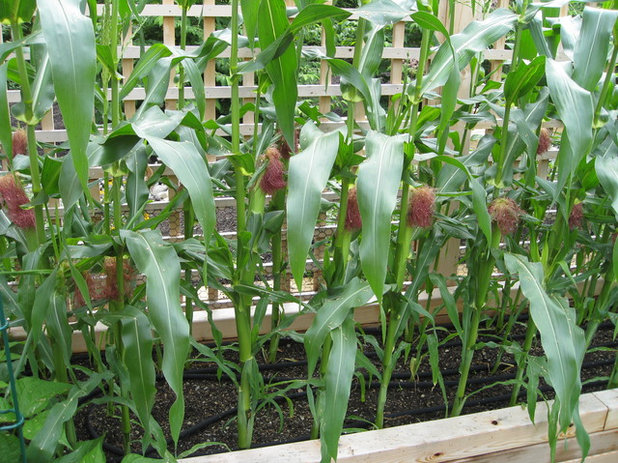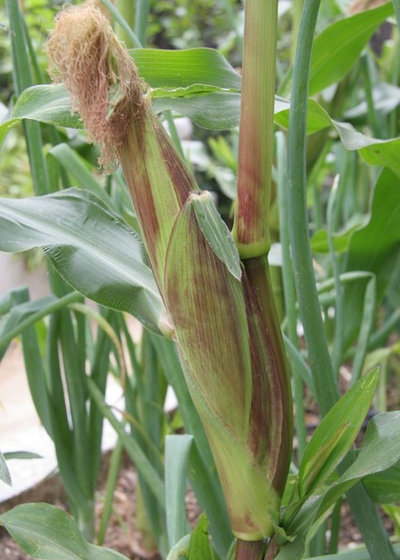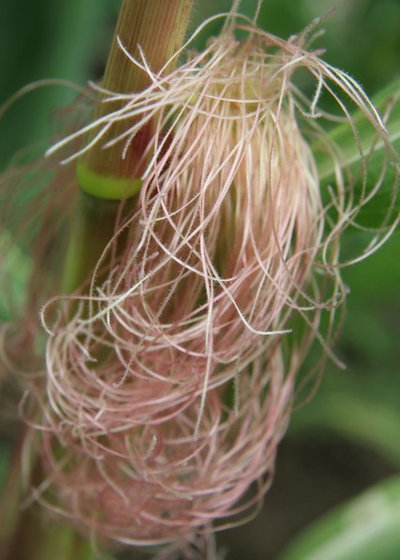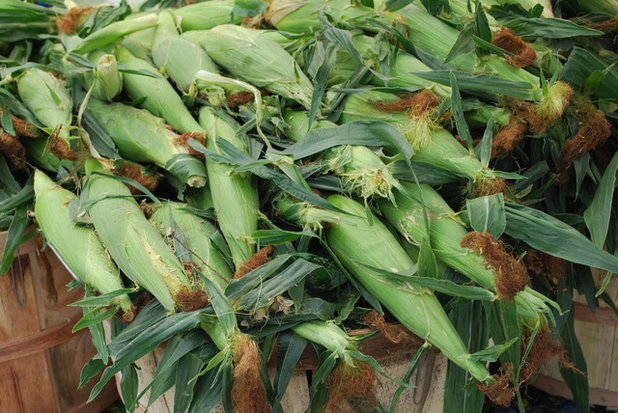The sweetest corn is that which is picked and immediately cooked. So if you want the best-tasting corn, try growing it yourself.
Traditionally, corn has required heat, long summer days and a lot more space than many other vegetables, making it a poor choice for cooler climates or those with short growing seasons and small gardens. Fortunately, there are new hybrids bred for cooler summers, short summers and even tropical island living. As for the space required, that’s still needed, but with planning you can make your “cornfield” a highlight in your garden. You may even find some new varieties that can handle being grown in a container.
Once you’ve decided to have a cornfield, you then get to decide on how impatient you are for the first ear. (Maturity dates range from just over 50 days to around 100 days.) You'll also want to decide if you’re going traditional with white, yellow or bicolor kernels or branching out into red, green, blue or black corn. And then there's the question of just how much sweetness you want, as there are now very sweet varieties available to home growers. To ensure a long harvest or try out a number of types, plant successively or choose early-, mid- and late-season varieties.
For something different, grow your own popcorn. It’s slow to mature but often boasts colorful kernels. Plus, you can enjoy your harvest well into the winter.
Note: Corn can easily cross-pollinate, so if you want a specific variety, plant it separately, at least 100 feet away and not downwind from other corn varieties, or choose varieties that mature at different times.

Land Design, Inc.
When to plant: Begin planting about two weeks after your last frost date, when soil temperatures have reached at least 55 degrees Fahrenheit (13 degrees Celsius); in hot desert areas, plant early enough to harvest by early summer.
Days to maturity: 53 to more than 100
Light requirement: Full sun at least eight hours per day
Water requirement: Regular
Favorites:- Bodacious, Country Gentleman, Golden Bantam, How Sweet It Is, Honey and Cream, Illini X-tra-Sweet SH2, Indian Summer SH2, Kandy Korn, King Kool, Luscious, Miracle, Northern Xtra Sweet, Peaches and Cream, Silver Queen, Trinity, Whiteout
- Short-season: Earlivee, Early Sunglow, Fleet, PolarVee
- Island: Hawaiian Supersweet #9, Hawaiian Supersweet #10, H68
- Popcorn: Bear Paw, Smoke Signals, Strawberry, Tom Thumb, White Cloud
- Container: Blue Jade, On Deck

ecocentrix landscape architecture
Planting and care: Choose a well-drained site in full sun. Mix compost or manure into the soil two to three weeks prior to planting. Set up any irrigation furrows or drip systems before planting as well.
To maximize pollination, plant corn either in a block containing at least four rows of corn that are 3 feet apart (the most productive method) or in a series of hills (somewhat less productive but easier to tend). Water the soil thoroughly before planting.
If you're planting in a block, sow seeds 1 to 2 inches deep and 4 to 6 inches apart. When seedlings reach 6 inches, thin them to 1 to 1 1/2 feet apart.
To plant in hills, mound up the soil a few inches high and 3 feet apart. Sow five to six seeds per hill, 1 to 2 inches deep, then thin to three plants per hill.
For best container results, plant in three or four 20-inch containers. Make three holes per container, sowing two seeds in each hole. Thin to one plant per hole once seeds have germinated and reached about 1/2 foot tall.

ecocentrix landscape architecture
Keep the soil moist but not soggy, and water deeply once the silks form. Feed the soil when plants reach 1 to 1 1/2 feet tall and again when they are 2 to 2 1/2 feet tall.
Weed carefully around the roots but don't bother pulling out the suckers, as they won't affect growth.
Numerous insects may damage corn, including aphids, flea beetles and moths. Good gardening practices can help alleviate some of these problems. Covering the ears with panty hose can protect them from some damage, and applying a few drops of mineral oil to the tip of each ear after the silks appear can stop corn earworms. Corn may also be subject to damping off.

Jocelyn H. Chilvers
Harvest: About three weeks after the silks appear, the corn should be ready to harvest. Once the silks are brown, slit the outer husk on an ear or two and pinch a kernel; if the juice that squirts out is milky, the corn is ripe. For best results, harvest when the water in the cooking pot is boiling, though some newer and sweeter varieties will hold their sugar longer. If you harvest early, store the corn unhusked in the refrigerator.
For baby corn, harvest shortly after the silks appear.
For popcorn, wait until the silks and husks are thoroughly dry; rub or cut off the kernels and store them in a dry place.





